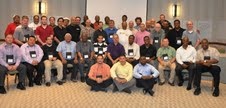Report back from WOCN Call to Action

I had the opportunity to attend the Women of Color Network’s Call to Action Institute and Conference May 10-14, 2010 in New Orleans, LA where I co-led the Men’s Institute and a session on prevention. As that city was awaiting the oil from the BP leak to spoil their shores, fish and other wildlife, I was reminded of how communities are impacted by disaster; I was reminded how racism played out in the neglect that contributed before, during and after Katrina. I took this conference as an opportunity to consider how I participate in efforts to end oppressions in my work to prevent domestic violence and sexual assault.
There were many important pieces of the WOCN’s powerful gathering of over 400. Here are some highlights:
- Recognize links between immigration policy and support women of color in violence prevention: The Latina caucus identified the recent immigration law in Arizona as a significant barrier for women to seek support and as a target. In order to address and prevent sexual violence and domestic violence, we must take action about these policies.
- Men Taking Action at the Men’s Institute: 40 men met for 2 days to explore how we can be aspiring allies to women of color. I learned from these men as we looked at our own privilege and how to support men in taking action to prevent men’s violence.
- Honoring Cultural Specific Work: I learned from so many different women and men about prevention efforts that use the resources from their culture to build prevention that reflects the needs of specific communities. There were so many examples: working with the Hmong in Wisconsin, Latina immigrants in New Mexico, African American communities in cities, Muslim communities throughout the United States, Vietnamese in Boston, etc.
- Mainstream women and men exploring how to support communities of color: I co-facilitated a discussion of white women and men about how to transform the work of ending domestic violence and sexual violence to support communities of color.
While we had only a little time, this conference demonstrated how people of all races, religions and communities can examine themselves, their families, their communities, and their society to make changes. Isn’t that what the social ecological model is supposed to be about?
